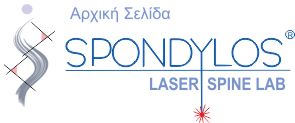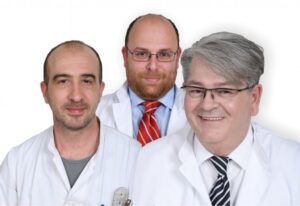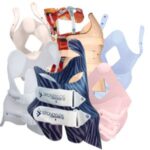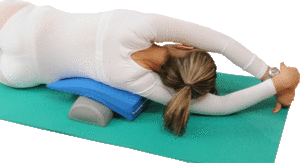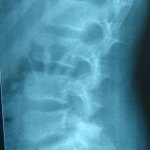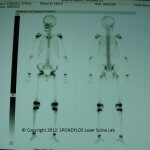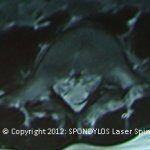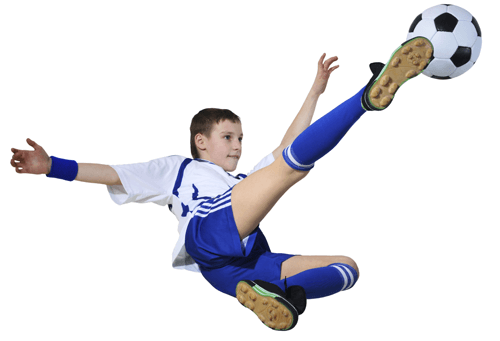
Spondylolysis is a common cause of pain in hyper-active and athletic teenagers, in sports such as football, swimming, artistic gymnastics, classical ballet etc.
In essence it is a stress fracture of the isthmus, unilaterally, or more often bilaterally of the fifth lumbar vertebra.
The fracture is caused by sudden over-extension and/or repetitive extensions of the torso.


In an athlete, sudden pain after an extreme attempt to hyper-extend, should make us suspect spondylolysis.
Usually, symptoms are not evaluated correctly and they are perceived as a muscle sprain in the lumbar spine, thus the patients receive analgesic treatment and re-engage in their sport after a few days.
As a result, the pain symptoms return and spondylolysis increases.
If spondylolysis is suspected, various examinations must be performed:
- Anteroposterior, lateral and oblique x-rays
- Magnetic Resonance Imaging
- Bone scanning with the use of Tc99.

Treatment
Treatment is based on whether the early diagnosis is made.
The less data identify in the exam the better things are for full recovery.
So we have four cases:
1- if the x-ray is negative, the MRI uncertain and the bone scanning positive unilaterally, the patient must abstain from sports, wear a bending brace (anti-lordotic) and begin a program to strengthen the stabilizing muscles in the lumbar spine and the muscles of the pelvic floor.
Healing probability following 6 months of treatment 100%
2- If the x-ray is positive unilaterally and the bone scanning positive the patient must abstain from sports, wear a bending brace (anti-lordotic) and begin a program to strengthen the stabilizing muscles in the lumbar spine and the muscles of the pelvic floor.
Healing probability following 6 months of treatment 88-100%
3- Positive x-ray bilaterally, positive MRI bilaterally and the bone scanning positive: the patient must abstain from sports, wear a hump-back brace (anti-lordosis) and begin a program to strengthen the stabilizing muscles in the lumbar spine and the muscles of the pelvic floor.
Healing probability following 6 months of treatment < 25%
4- X-ray and MRI positive bilaterally and the bone scanning negative:
Healing probability 0%.
A 10-year-old football player, sudden pain that did not regress for 2 weeks, increasing when hyperextending and reducing when at rest. X-ray negative, MRI almost positive (swelling in the isthmuses), and bone scanning positive with Tc99 positive in the third phase.
He was fitted an anti-lordotic bending brace SPONDYLOS brace for 6 months, he abstained from sports and was subjected to one hour daily exercising program to reduce lordosis (stabilizing and pelvic floor muscles).
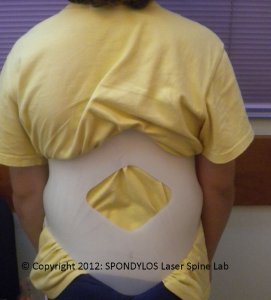
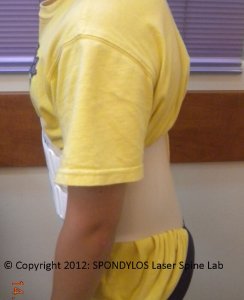
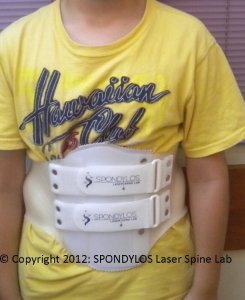
Practiced in mild anti-lordosis exercises with the brace applied and three months later he began playing football mildly, wearing the brace.
After 6 months he had no pain and returned to his athletic activities as normal.
